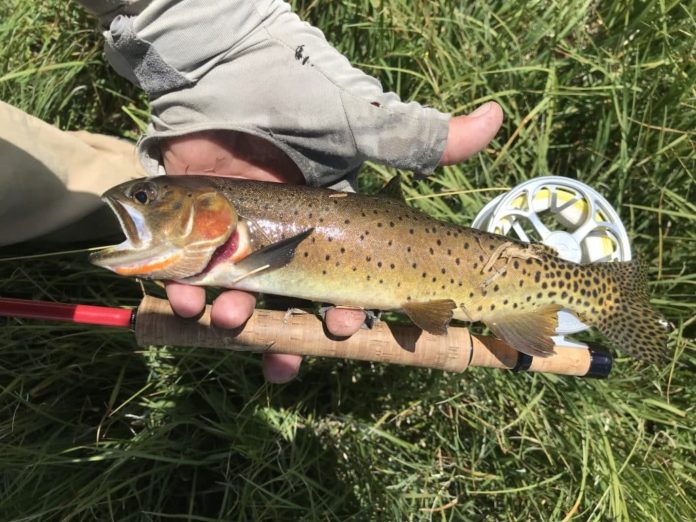Michael Salomone/Courtesy photo
Fly anglers in the Vail area revel in the variety of trout we have in the immediate vicinity. From small water streams to high-Alpine brooks and broad banked rivers, the amount of moving water anglers can choose from guides the type of fish encountered. Rainbow, brown, brook and cutthroat trout are caught regularly if you choose the right water.
The local rivers are still under some type of voluntary fishing closure. The Eagle and Colorado are receiving cooler water from afternoon rains, but both rivers are still dancing dangerously around temperatures too high for healthy trout. Voluntary is of course a choice, but last time I looked around I couldn’t find anyone subsistence fishing. Everything about modern day fly fishing is centered around a voluntary choice, starting with the choice to use only flies. The choice to not use any flies on water that is too warm for ethical angling practices is a choice anglers need to make.
Those anglers choosing to take their rods up in elevation will find crisp, cool water. It could be a local stillwater or the stream flowing into the stillwater; altitude holds fresh spring water at ideal temperatures for any trout. And it will be pure Colorado.
Rainbows seem to show up in all kinds of water. Black Lakes at the top of Vail Pass are two stillwaters that hold significant numbers of healthy rainbow trout. With a handicapped access fishing dock on the larger, upper lake, any angler can stretch a line at Black Lakes. Fly anglers can throw large dry flies on the surface, sink nymphs down deep or strip streamers for constant action. Once again the choices are numerous.
Brown trout exert their predatory prowess by taking over a run or deep hole. Browns are overly aggressive and push other trout away from their preferred feeding lane. Dominating a deep hole, any small fish haphazardly venturing into the lair of the big brown trout ends up eaten.

Michael Salomone/Courtesy photo
Homestake Creek, off Highway 24 between Minturn and Leadville, holds browns that will take a dry fly but really want to eat a piece of meat.
Brook trout are the painted up cousins of the brown trout. Holding more color than a trout should possess, brook trout preparing for spawning have fiery reds and oranges on their belly with fins highlighted by white and black lines and a variegated green back that is hard to recreate. Scarlett spots haloed by baby blue accent the diminutive trout.

Michael Salomone/Courtesy photo
Brook trout are the kind of fish a Colorado fish fry needs. Plentiful, with high harvest numbers and a willingness to attack a fly make brookies a great fish for little 2wt and 3wt fly rods.
Any stream choked into a pond by beavers holds brook trout. The upper Piney Creek above Piney Lake is prime brook trout country. Anglers might even catch one in the stream flowing out of the lake, but the water above the lake is golden. Brook and brown trout spawn at the same time and can produce a hybrid tiger trout that fly anglers love to catch.
Cutthroat trout take a little more work to locate and catch. Cuttthroats are only going to be found in pristine waters where the negative effects of rainbow, brown and brook trout don’t out-compete the precious fish. Sporting a crimson slash below their gill plate, cutthroats are unmistakable. Just as willing as brook trout to eat a dry fly, cuttthroats can make for a great day of dry-fly fishing.

Michael Salomone/Courtesy photo
Taking a fly rod into the high country creates a true Colorado angling adventure. Casting dry flies with lightweight fly rods to painted up gems in perfect trout angling conditions is a fly-fishing experience that’s hard to forget. 3wt and 4wt fly rods lay down delicate dry flies with a soft touch. Pairing your lighter weight rod to the smaller size trout creates challenging angling opportunities.
Reels need to be lightweight. Click and Pawl reels function perfectly. Sensitive, adjustable drags are needed elsewhere. Small water, tight casting, little fish all support use of little reels and pet rods.
Anglers looking to fill a void left by hazardous water temperatures on our local rivers need only to look up to find favorable angling conditions. Stillwaters, small streams and beaver ponds all hold some type of trout for fly anglers looking to catch a variety of fish. Rainbow, brook, brown and cutthroat are the trout all anglers will find when you fish the right water.

Michael Salomone/Courtesy photo






























